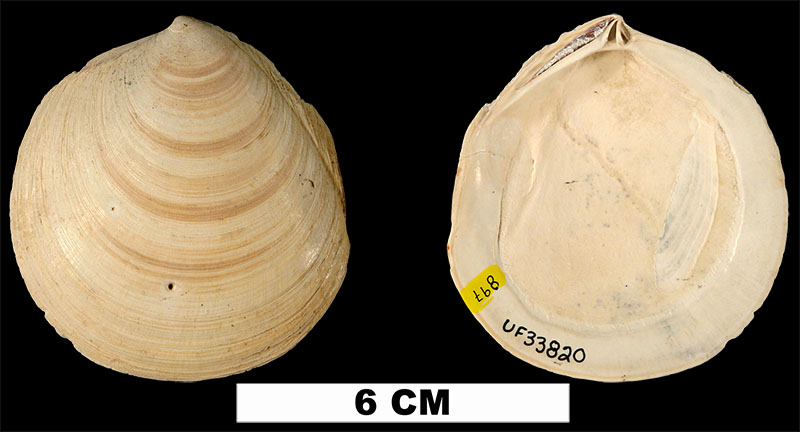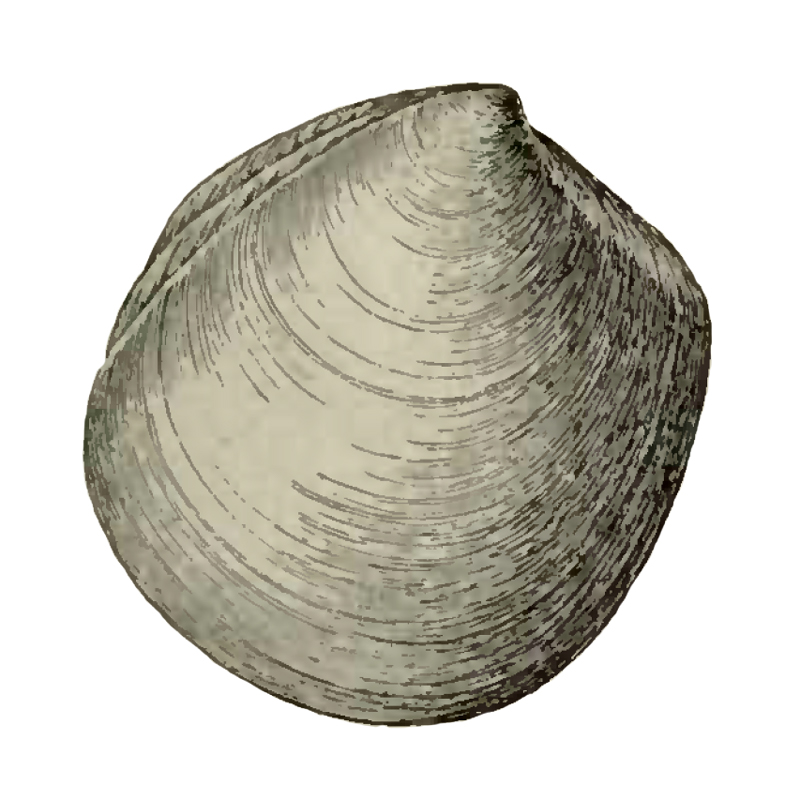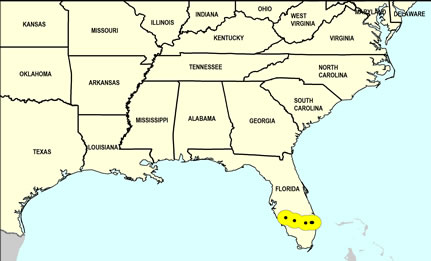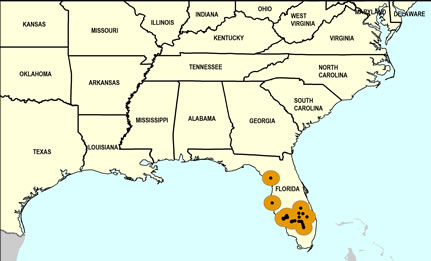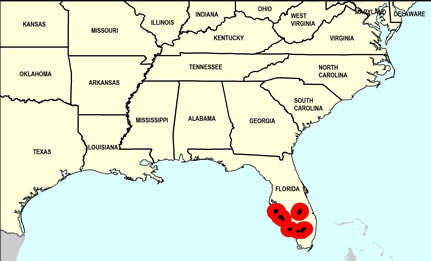
Miltha caloosaensis
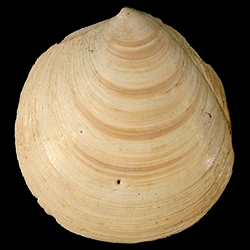
- Phylum: Mollusca
- Class: Bivalvia
- Order: Imparidentia
- Family: Lucinidae
- Genus: Miltha
- Species: Miltha caloosaensis (Dall, 1898)
Geological Range
Late Pliocene to Middle Pleistocene; Extinct.
Paleogeographic Distribution
Southern Florida.
Remarks
This species was originally figured in Dall (1898) without a written description.
Original Description (from Dall, 1903, p. 1376-1377):
"Pliocene of the Caloosahatchie and Shell Creek, Florida; Willcox, Dall, and Burns.
Shell elevated, rather compressed, short, finely concentrically striated; beaks small, pointed, slightly curved forward over an extremely minute and almost obsolete lunule; anterior dorsal area short, narrow, feebly defined; posterior area long, wider, defined by a narrow sulcus, with a less pronounced sulcation dividing the area lengthwise into nearly equal parts; there are traces of very minute radial striation on some specimens; resilium shorter than the ligament, both deeply inset and partly covered by the dorsal margin, which is usually broken away; teeth and scars normal, well developed; disk internally with a well-marked oblique sulcus. Alt. 53.0 (to 63.0), Ion. 47.0, diam. 13.5 mm.
The lunule is better developed in the older specimens and more in the right than in the left valve. Some specimens have the right valve less convex than the left. The species is very like P. (Miltha) Childreni Gray, but is proportionally more elevated, with a more delicate hinge and smaller muscular impressions. In the Pacific species, when there is a perceptible difference in the convexity of the valves, it is the left one which is flatter, and it is a curious coincidence that similar differences occur between the Atlantic and Pacific species of Tellidora, also inequivalve shells."
To access this description in its original formatting through Google Books, click here.
Stratigraphic Occurrences
- Middle Pleistocene
- Bermont Formation (S. FL)
- Early Pleistocene
- Caloosahatchee Formation (S. FL)
- Late Pliocene
- Tamiami Formation (Pinecrest Beds) (S. FL)
